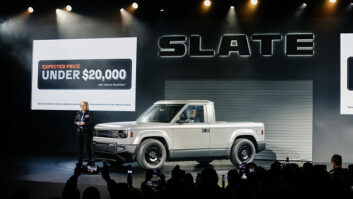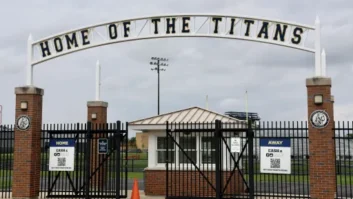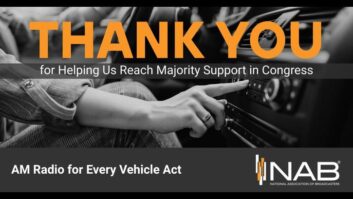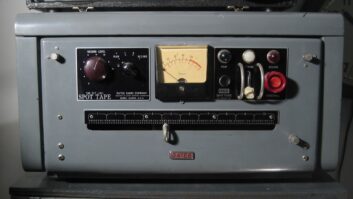People who are passionate about radio collect all manner of station ephemera, including but not limited to coffee mugs, QSL cards proving reception, T-shirts, airchecks, belt buckles, key chains, buttons and music surveys.

Phil Bytheway and sticker storage containers. The unusually-appellated Phil Bytheway collects stickers.
“There are bumper stickers, window stickers, the relatively new static-cling stickers, mailing labels, phone stickers and even press-on tattoos,” Bytheway said.
He collects just about anything with call letters or a slogan on it.
“I started my collection with KJR(AM) here in Seattle, but in my early days I also picked up stickers from WLS(AM), Chicago; KHJ and KFRC [both AM] in San Francisco and others. On Yahoo, there is a group that buys and sells these, and the most famous stations seem to fetch the highest prices. Single stickers typically sell for between $5 and $10 online, but I like to pay much less if possible. My favorites are the ones with great designs, and the most colorful stickers come from Florida and Hawaii. But I’d be interested in collecting a sticker from any AM station I have heard.”
In the world of radio stickers, there is often a promotional tie-in with musical groups, sports teams or radio personalities.
“WRIF(FM), Detroit has a racetrack oval design,” said Bytheway. “In the middle they have their call letters, or even a rock group name without the call letters! At one point the networks that broadcast sports play-by-play would create decals and stickers for their teams and put the call letters of the local stations carrying the games on them as well.”
How did Bytheway discover this niche hobby, and how does he obtain new station stickers?



“I started listening to the AM band for distant stations while I was in junior high,” said Bytheway, now 62. “I began writing them to verify my reception and often they would include a sticker with their reply. That started me building and organizing my collection by call letters, and now I have about 42,000 stickers.
“It’s more difficult to get stations to send you their stickers these days,” he said. “So when I initially contact a station, I seek out the promotions director and offer to include a self-addressed, stamped envelope. Once they ask for the envelope, I get a 100 percent return rate. If I can get them to send me two stickers, I’ll have an extra one to trade with my friends.”

A COMMUNITY OF COLLECTORS
Bytheway runs a newsletter called DecalcoMania (www.anarc.org/decal) and belonging to the club will cost you less than the price of a Big Mac. There are about 30 members in the United States, but Bytheway says that this hobby is huge in Europe.
While he has obtained a small number of stickers from places like the United Kingdom, Mexico, Australia and New Zealand, he says he has a hard time just keeping up with domestic product.

A collage of stickers from Bytheway’s collection.
All 42,000 of his stickers are detailed in an Excel spreadsheet, and Radio World obtained a copy of that document. Besides the expected “W,” “K,” “C” and “X” call letters of North America, one can’t help but notice stickers in the collection from VOAR in St. John’s, Canada (covering Nova Scotia and Saskatchewan), IBC in Iqaluit (Inuit Broadcasting Corporation) and JOY Radio in Ghana.
Bytheway’s sticker collection is large, but that is a relative term. He trades with a friend in Italy who owns about 330,000.
Contact Bytheway at [email protected].
(Radio World asked Bytheway about his surname. “My last name is derived from the British term for someone who was granted land on a road in Shropshire near Much Wenlock,” he said. “They lived by-the-way. ‘Bytheway’ is pronounced just like the expression ‘by the way,’ no odd twists or emphasis on any syllable.”)
In perusing Bytheway’s spreadsheet, Ken Deutsch found a number of familiar call letters representing stations at which he did a lot of damage in his younger days: WOHO(AM), Toledo, Ohio; WPAG(FM), Ann Arbor, Mich.; and WXEZ(FM), Sylvania, Ohio.







